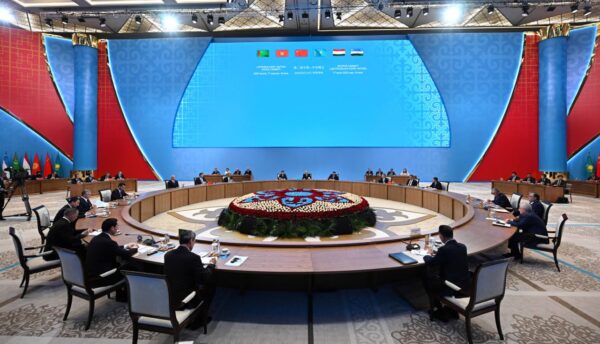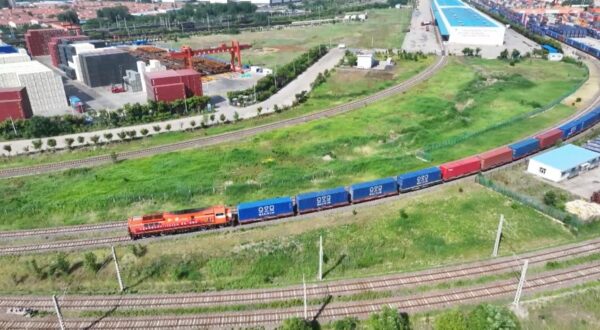
The second China-Central Asia Summit is set to commence this Tuesday, marking another milestone in the deepening partnership between China and the five Central Asian nations—Kazakhstan, Kyrgyzstan, Tajikistan, Turkmenistan, and Uzbekistan.
In a significant gesture underscoring the importance of regional diplomacy, Chinese President Xi Jinping will arrive in Astana on Monday to attend the summit and deliver a keynote address, outlining China’s strategic vision for future cooperation with its Central Asian neighbours.
The gathering takes place every two years, with this year’s summit holding special significance as it will be hosted in a Central Asian country for the first time, symbolizing the growing maturity and equality of the China-Central Asia relationship. The platform, established through the joint efforts of all six nations, reflects a shared aspiration for regional stability, mutual prosperity, and high-quality development.

The Chinese Foreign Ministry spokesperson Lin Jian said the decision to establish the platform was a collective one, aligned with the regional goals of peace and growth.
“Since the first summit in Xi’an in May 2023, our relations with Central Asia have entered a new era,” Lin stated. “Our cooperation has deepened and solidified, continually injecting momentum into regional development and delivering tangible benefits to all six countries.”
At the summit, President Xi and the Central Asian leaders will hold in-depth discussions on their achievements so far, chart future paths for economic and strategic collaboration, and address major international and regional issues. They are also expected to participate in a series of events designed to reinforce mutual understanding and partnership.
Beyond multilateral talks, President Xi will also hold bilateral meetings with his counterparts, outlining top-level plans to enhance China’s relations with each of the five Central Asian nations. These engagements aim to align development strategies, expand economic ties, and improve connectivity across a range of sectors—from infrastructure and energy to education and cultural exchanges.
China envisions the summit as a platform to consolidate mutual trust, broaden consensus, and deepen cooperation. “We believe that through this summit, China and the five Central Asian countries will inject more positive energy into building a closer China-Central Asia community with a shared future,” Lin Jian said on the regular press briefing on Friday.

As the global geopolitical landscape shifts, he said the China-Central Asia Summit represents a forward-looking model of regional partnership, centered on dialogue, development and mutual respect. The outcomes of this summit are expected to chart a clear course for sustained cooperation and shared prosperity across the heart of Eurasia.
From Ancient Silk Road to Modern Diplomacy
As camel caravans give way to freight trains, the age-old ties between China and Central Asia are entering a new era. What began along the ancient Silk Road is now reshaped by modern diplomacy, trade and shared development goals, strengthening a partnership rooted in history and focused on the future.
During the first China-Central Asia summit in May 2023, Lin Jian, the spokesperson for the Chinese Foreign Ministry, highlighted the strategic importance of the region.
“The China-Central Asia mechanism was a unanimous decision made by both sides, driven by a common desire to maintain stability and pursue high-quality development,” he stated.
These five Central Asian countries serve as a critical land bridge between China and Europe. They are vital to the Silk Road’s vision of reviving ancient trade routes and fostering transcontinental economic corridors.

Since the announcement of the Belt and Road Initiative (BRI) in 2013, China and Central Asia have witnessed an unprecedented transformation in their relations, moving beyond mere trade agreements to a deep, multifaceted partnership rooted in infrastructure development, energy cooperation, and cultural exchanges.
The Khorgos Gateway, located on the Kazakhstan-China border, has evolved into one of the most significant dry ports along the China-Europe rail corridor. This project, one of the most critical outcomes of BRI cooperation, has significantly reduced transportation times between China and Europe, transforming Kazakhstan into a logistics hub.
According to the Kazakhstan Ministry of Investments and Development, the trade volume passing through the Khorgos Special Economic Zone has grown exponentially, boosting Kazakhstan’s economy and positioning it as a central player in regional trade.
Uzbekistan’s Minister of Transport Ilkhom Makhkamov, in an official statement, referred to the railway as a “game-changer” for trade. “This railway will not only benefit Central Asia but will be a vital artery linking China to the Middle East and Europe,” he said.
The Second China-Central Asia Summit in Astana is far more than a diplomatic meeting; it is the boardroom of one of the world’s most dynamic and rapidly expanding economic partnerships.
As leaders convene in Astana, they carry the weight of this impressive economic legacy and the immense potential of the future. The summit’s success will be measured not just by the number of signed agreements but by its ability to propel this vital partnership toward even greater heights and shared prosperity across the heart of Eurasia.
The next decisive chapter will be marked in Astana.
By CGTN’s Cen Ziyuan













